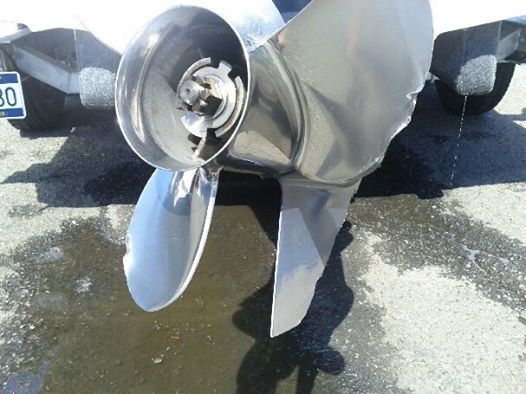
10 Common Boat Problems and How to Fix Them
Boat problems have a way of showing up when you least expect them, and they can be frustrating if you don’t know what they are.
Luckily for you, many of these problems are very common, and there is a wealth of solutions available for when your boat starts acting up.
Let’s unpack ten common boat service issues and the best ways to work through them.
Not Starting
Boat problems don’t come much more alarming than turning your ignition key and hearing nothing.
Don’t despair – there are many reasons this could happen.
The Solution
It’s most likely an electrical issue, so we’ll start there.
Start by checking your kill switch. Shift into neutral, and examine the actual starter switch to see if it’s loose. Tighten up any retaining screws to fasten the switch back into place. If it groans without starting, it might be a poor connection or a low battery. Get these checked out, and remember to inspect, clean and replace your ignition system components.
Not Shifting
Once you’ve got your boat started, you might run into problems shifting out of neutral, rendering your trip useless. Your shifter has stopped engaging the transmission.
The Solution
The majority of small boats make use of mechanical cable shifts, where the linkage could become physically stuck. Inspect the gearbox for a detached transmission housing cables and reconnect this. Alternatively, if your cable has become stuck with rust or dirt, you can manually jiggle it free.
Of course, if your cable isn’t stuck, the problem might be a failed transmission unit. You’ll need to have this looked at professionally, or at least work on it yourself, back on land.
If your boat uses an e-link control, there’s a good chance the problem is a simple fuse replacement.
No Steering
Of all the boat problems you could face, not being able to steer is one of the worst. If you turn your wheel and it is either locked or simply does nothing, you’re going to want to make a few rudimentary checks.
The Solution
Check for low hydraulic fluid, and make sure to keep an eye out for leaks. If you find fluid escaping from somewhere, you may just need to tighten the fitting so that it’s airtight.
A stuck drive is more serious and may mean a mechanical failure. Check the entire cable system for loose connections, particularly around the steering arm. Servicing your parts will help to avoid breakdowns and having to replace parts which may disconnect and become worn out.
Water Rising
When your bilge pump begins straining under its workload and your boat feels heavier than usual, you might be taking on unchecked water.
The Solution
Before anything else, consider that you may simply have forgotten to insert the transom drain plug. This may sound simple, but it’s been known to happen and will directly affect your work.
If you have, there’s a chance you’re dealing with a burst hose on the cooling and exhaust system in your engine. Shut down your engine and change out for a spare hose and clamps. If you don’t have these, consider simply cutting and shortening the end fitting. Alternatively, you could wrap the split section in tape for a more short-term fix.
Remember not to ride these fixes for too long – they will damage your engine over time. Get the part replaced as soon as possible.
Going Dead
Nothing stops the fun of a boat ride short quicker than the engine just going dead, suddenly.
The Solution
Check to see if your killswitch has been unexpectedly triggered at some point. As with our earlier point, check to see if your ignition switch (or its connections) has come loose.
Next, move on to your engine. Corrosion might be at the heart of your problem, and this could require some simple clean up. Beyond that, you’ll need to consult your parts manual or get in touch with a professional.
Sputtering and Losing Power
A fairly common problem, this is often the end result of filter issues or plugs which have become gummed up.
The Solution
Change out your in-line fuel filter, or at least clean your old one out. Before restarting your boat, make sure to vent your engine box entirely, to prevent further complications.
Broken Belt
In any conversation about boat problems, the dreaded broken drive belt is one most owners are going to run into at some point. The overheat light lights up, or your voltage meter indicates that the alternator has stopped charging, and you’ve got a problem.
The Solution
The best solution to this problem is to carry a spare drive belt on your vessel, along with a full set of tools to change it out. Beyond that, you might consider pantyhose in the belt’s place, but the results are iffy and not likely to last very long.
A Stuck Trim
When your trim becomes stuck, your boat is apt to become impossible to raise in the water and onto the ramp.
The Solution
As with so many other components in any vehicle, a malfunction of this sort could always be a bum fuse. Failing this, the issue might be hydraulic in nature. Luckily, trims are built with a hand operator function for just this kind of situation. Locate the trim release valve, usually near the base of the overdrive or outboard. Open this screw to release the loop’s pressure, and manually tilt your drive.
Overheating Engine
Watching your temperature gauge creep steadily upwards can be alarming on a good day. Put your fears aside, because there’s a simple solution.
The Solution
Overheating engines almost always come down to water flow issues in the boat’s cooling loop. Check your loop for blockages, and flush it out via the intake.
Vibrations While Accelerating
A boat is a luxury vehicle, and nobody buys one expecting a bumpy ride. If you are experiencing increasing vibrations the more you accelerate your vehicle, something may be wrong with your prop.
The Solution
Damaged prop blades can throw off the streamlining of your boat as it cuts through the water. Check your prop for even minor distortions, as well as objects snagged in the blades.

Lastly, check the rubber bushing inside of the hub for slippage. If this is the problem, you may experience a loss of power. It’s best in these cases to idle home and have it seen to later.
Boat Problems: A Thing Of The Past
A failure in your boat’s ability to pick up and go could be due to any number of potential issues. With a little know-how, some time, and our handy 10 point list, you’ll be ready when any of these common issues rears its ugly head.
Are you a boating enthusiast looking for parts, services, and a huge range of accessories for your vehicle? Check out some of our great products, today, and get yourself out on the water in style!
